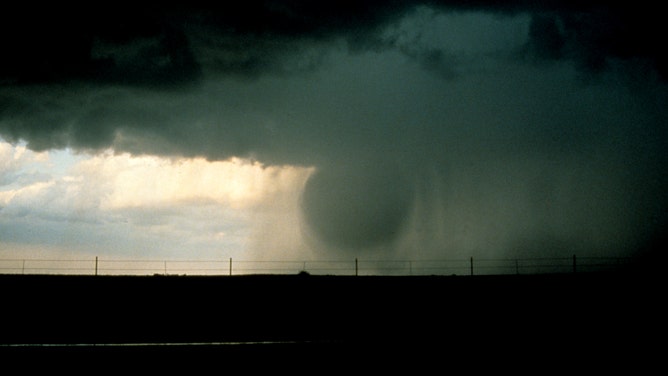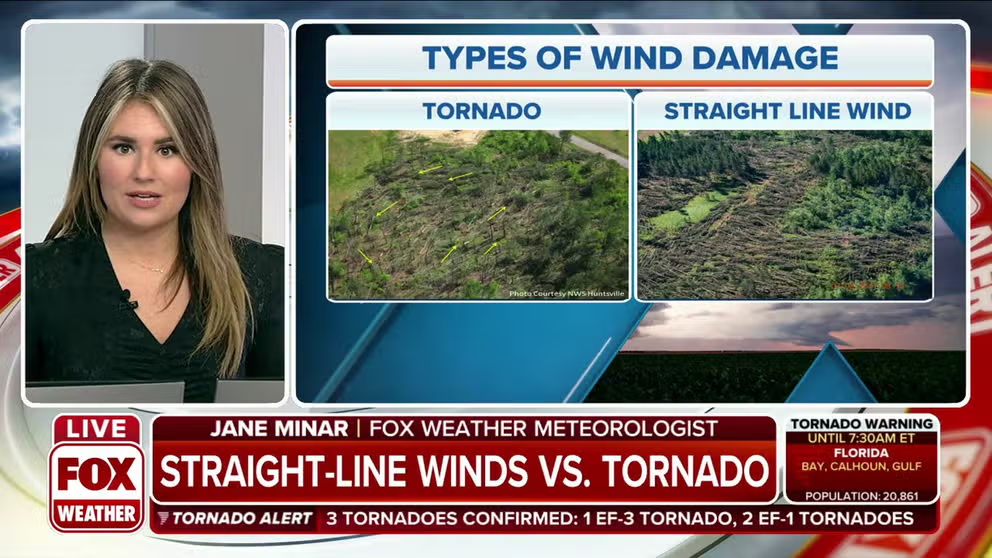Severe microburst kills woman at upstate New York campground, injures others
Eyewitnesses said the winds "came up suddenly and then lasted at least 5 minutes with one tree after another falling." A National Weather Service damage survey found the destruction was caused by a microburst.
Straight-line wind damage vs. tornado: What's the difference?
FOX Weather meteorologist Jane Minar explains the difference between the types of wind damage: straight-line winds and a tornado.
COLCHESTER, N.Y. – A woman was killed and others were injured at a New York campground when a severe microburst with 90-mph winds knocked down trees on Sunday, according to the National Weather Service.
The severe microburst occurred around 10:30 a.m. north of Cook Falls, near the southeast edge of Delaware County, when a line of severe thunderstorms moved across New York. Severe Thunderstorm Watches and Warnings were in place Sunday for millions across the Northeast.
The National Weather Service in Binghamton's damage survey team found sporadic damage from the severe weather in Delaware County and northern Sullivan County.
WHICH ARE THE MOST ACTIVE MONTHS FOR DAMAGING WINDS FROM SEVERE STORMS?
The NWS said the most concentrated damage was in Cooks Hollow and Butternut Grove in Beaver Kill Valley.
According to the Colchester Police Department, Delaware County 911 dispatchers received multiple reports of trees down and people trapped in campers at Russell Brook Campground.
First responders found multiple power lines and trees down and a woman who was hit by a fallen tree. A few recreational vehicles, campers and tents were heavily damaged, including some destroyed by falling trees.
Colchester Police said Carol E. Luistro, of Edison, New Jersey, was killed when a large tree snapped and fell on her camper.
Another person was injured when they were hit in the head during the storm. Others suffered minor injuries, according to the NWS.
Eyewitnesses told the NWS the winds "came up suddenly and then lasted at least 5 minutes with one tree after another falling."

File photo of a downburst.
(NOAA Legacy Photo ERL/WPL / NOAA)
FOURTH OF JULY WEATHER: WHO WILL HAVE HOLIDAY TRAVEL HEADACHES?
The damage pattern diverges from the middle of the storm path, indicative of a microburst or straight-line winds, which can be just as destructive as a weak tornado.
Straight-line winds form when warm air forces itself up into the atmosphere. When the air cools, it condenses and drops to the surface, sending wind exploding down to the surface. These powerful winds can reach speeds up to 100 mph.
